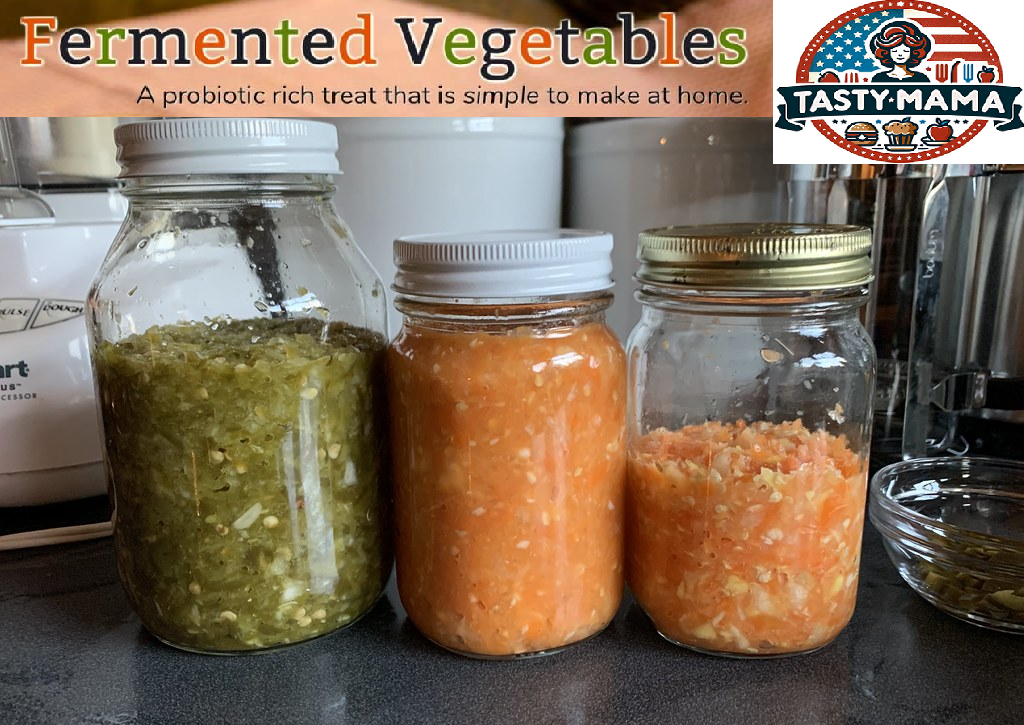The Ultimate Guide to Fermenting Vegetables: A Healthy and Delicious DIY Project
Fermenting vegetables isn’t just a trend; it’s an ancient method of preserving food that packs a powerful nutritional punch. Whether you’re fermenting your own vegetables at home or simply adding fermented vegetables to your diet, understanding the process and its benefits is crucial.
Introduction to Fermentation
It involves the breakdown of carbohydrates in food by bacteria and yeast, which produces beneficial bacteria known as probiotics. These probiotics are what give fermented foods their health-promoting properties. The benefits of fermented vegetables are numerous, ranging from improved digestion to a stronger immune system.
Health Benefits of Fermented Vegetables
The health benefits of fermented vegetables are wide-ranging and well-documented. Probiotics found in fermented foods have been linked to improved gut health. Better digestion, and a stronger immune system. They can also contribute to better mental health, thanks to the connection between the gut and the brain. Fermented vegetables are also rich in vitamins, minerals, and antioxidants, making them a great addition to any diet.
How to Ferment Vegetables at Home
Fermenting vegetables at home is a simple and rewarding process. All you need are fresh vegetables, salt, water, and a clean container. Here’s a step-by-step guide to fermenting vegetables at home:
- Choose your vegetables: Pick your favorite vegetables and cut them into the desired size and shape.
- Prepare the vegetables: Wash and trim the vegetables, removing any dirt or debris.
- Make a salt or brine: Dissolve salt in water to create a brine, which will help to preserve the vegetables.
- Pack the vegetables into a jar: Layer the vegetables in a clean jar, adding any herbs or spices you like.
- Seal the jar: Use a lid or a fermentation airlock to seal the jar.
- Store the jar: Place the jar in a cool, dark place for several days to several weeks, depending on your taste preferences.
- Observe and taste: Check the vegetables regularly and taste them to see if they are ready.
- Refrigerate and use : Once the vegetables are fermented to your liking. Store them in the refrigerator and enjoy them as a tasty and nutritious addition to your meals.
Fermenting Vegetables
Ingredients
- Vegetables of choice such as cabbage, carrots, cucumbers, radishes, and bell peppers
- Salt non-iodized
Instructions
- Clean and chop vegetables into desired sizes and shapes.
- Place vegetables in a large bowl and sprinkle with salt, using about 1 tablespoon of salt for every 2 cups of vegetables.
- Massage vegetables with your hands, squeezing them gently to release their natural juices.
- Pack vegetables into a clean glass jar, pressing them down firmly to remove any air bubbles.
- Add any additional flavorings or seasonings (such as garlic, ginger, or herbs) to the jar.
- Cover vegetables with a weight (such as a smaller glass jar filled with water or a cabbage leaf) to keep them submerged in their own juices.
- Cover the jar with a clean cloth or lid, leaving it slightly ajar to allow gases to escape.
- Allow vegetables to ferment at room temperature for 1-2 weeks, checking them periodically to ensure they stay submerged.
- Once vegetables are fermented to your liking, remove the weight and seal the jar with a lid. Refrigerate for up to 6 months.
